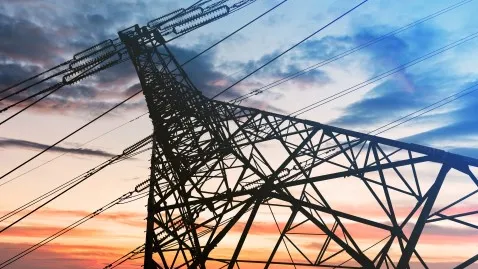
Why should India be aggressive in privatising discoms?
Most public discoms are on the verge of bankruptcy because of high AT&C losses aggravated by political populism, Barnik Maitra claims.
In India, most public distribution companies (discoms) are facing bankruptcy due to aggregate technical and commercial (AT&C) losses, but these are expected to decline as the government moves to privatise distribution and enable discoms to collect revenues better.
NITI Aayog, a state-owned policy think tank, reported in August 2021 that the discoms’ total loss is estimated to be ₹90,000 crores (US$12.1b approximately) and the accumulated overdue payment stood at ₹67,917 crores (US$9.13b), as of March 2021. Moreover, according to the Ministry of Power in August, the AT&C losses fell to 21.83% in 2019-2020 from 23.5% in 2016-2017.
Arthur D. Little’s Managing Partner Barnik Maitra discussed with Asian Power the state of India’s power sector. He also touched on the topic of discoms’ privatisation and shed light as to why the country is prioritising it.
Can you give a brief overview of where India is now in terms of its renewable targets? How is it faring compared to other countries?
Most markets, like Indonesia, the Philippines, China, and Vietnam, are very coal-dependent. The challenge has been how to increase the share of renewable energy (RE) without shutting down coal plants because all of these are dynamic, growing markets. The strategy adopted by most countries, India, in particular, is to not add more coal capacity unless it's completely needed or critical. The post-COVID economic recovery in India has been much faster than anticipated, yet mining productivity and the coal supply chain has not kept pace. Again, things like these just emphasise the need to move away from it. Amongst a lot of countries, India has done quite well. It has set reasonably aggressive targets and, as we speak, India has already achieved 40% of its committed renewable non-fossil fuel-based energy targets and stands at nearly 150 gigawatts (GW) installed capacity of RE, which the country is planning to quadruple to around 500GW by 2030.
The approach that India has taken is two-fold. One is that there are very reasonably attractive subsidy mechanisms put in the earlier phase and now they've also completely relaxed foreign direct investment (FDI) norms to push RE. It's a calibrated, slow journey but you have to realise that in emerging markets, it's very difficult for you to do a dramatic shift; but India's adding the capacity. India is able to deliver because of the subsidy mechanism, the FDI mechanism. Few homegrown companies such as ReNew Power, Azure Power have been leading light in renewable energy generation and they are joined by a couple of Indian conglomerates, like Adani Energy and Essel Solar, who have also made big bets on RE. Tata Power is the other big private utility player that made a big bet on renewables. Tata Power had set a 2025 goal of having 35% of its generation capacity from renewables. I think they're already at 32% of generation capacity from clean energy sources, which is a noteworthy mix. Adani recently picked up all of SoftBank's RE portfolio.
The second aspect is the cumulative focus as SECI and NEDA have facilitated the development of various solar parks across states. The participation from medium-big players, policy-level support, fast-paced approval process for allotment of land, grid connectivity have paved way for fast growth.
I don't think we will get to a place where coal will completely be phased out. But fast forward to 10 years from now, you should be able to see at least 50% renewable in markets like India. The last mega coal-fired project in India was commissioned or was announced in 2010. Since then, there have been no big projects announced. These are the measures that governments are taking. Will this be enough? Probably not. But again, it's a good start and good progress in a country like India.
How viable are the targets of India in reducing emissions?
Six to seven years back when the push towards solar started, the total cost of production was around ₹8 to ₹10 a unit per kilowatt-hour, compared to coal, which is around ₹3. Now, if you're going to also store it, because what this does not include is the battery costs and often that becomes 50% to 60% more when it started seven to eight years back, there was a five, six times delta between the two sources. Now because of technology and innovation, what was ₹8 to ₹9 is already down to ₹3 and the battery’s also down from ₹7 or ₹8 to another ₹3; So, if you look at the cost curve, it is not below coal, but it is at least on a comparable basis and getting more competitive as storage costs improve.
In distributional markets in India, the industry and the commercial segments cross-subsidise the agriculture and residential segments, which means industrial users and commercial users pay ₹8 to ₹9 per unit of power. If you supply power to them at ₹6 to ₹7, you are actually not losing money, making the business case in itself viable.
The government is also now pushing incentives to encourage home users to do rooftop solar. With the capital subsidy, the cost numbers look very different. The nature of the power grid itself is shifting, but if you fast forward 10 years from now, rooftop solar becomes more important because all utilities are going to move to micro-distribution or microgrid models. There are already pilots beginning on how to do microgrids, generate closer to demand and not generate centrally and transmit long distances. As we move towards microgrids, I think you will have rooftop solar becoming an integral part of grids and India has put subsidy mechanisms in place to encourage installations. The government has now realised that the nearly bankrupt public distribution, cannot be made financially viable. It has actually realised it's better to gradually privatise distribution than recapitalise public distribution companies.
Commitments made on reducing emissions may look very steep from the present viewpoint but given a structured phasing out of fossil fuel-based vehicles (an auto scrappage policy is in place), incentives to promote EV and clean fuel vehicles (subsidised registration, financing, etc), initiatives on awareness and reduction of dependability, I think India shall reach a long way.
Why are they bankrupt?
One is obviously the classic AT&C losses, which are very high because of power theft. Most markets are operating above 20%; whereas the benchmark is 6% to 7%, even if a discom attains 10% it is considered to be in good health. Reason number two is systemic challenges such as non-availability of metres, defunct distribution networks, and poor power reliability, lack of sub-stations that lead to load balancing challenges and ultimately leads to pilferage. Non-availability of relevant and accurate data also causes challenges in determining the Average Cost of Supply (ACS), Average Billing Rates (ABR). The third and most challenging is political populism. In a lot of states, agricultural power is free and residential power is subsidised extensively. In a few states, in the residential sectors, the first 100 units are given free. So, there is a lot of adventurism on behalf of local politicians who actually announced free power with the public discoms left to collect the tab. The problem of inadequate collections and high AT&C has driven these discoms to the verge of bankruptcy.
I think that the government, a couple of years back, pumped in several billion dollars into the public distribution sector, all of which has disappeared because collections and AT&C losses were not addressed, and they are again bankrupt or on the verge of bankruptcy.
What value do you think could be unleashed in privatisations?
If you look at the performance of a private sector distribution, the AT&C losses can get to as low as 6%, whether currently operating at over 20%. If the government wants you to subsidise power, they pay you the subsidy and you don't bet on a customer’s behalf. That model is proven. You will not lose money if your power mix is 50% renewable and 50% coal because you will be able to realise tariffs, which are ₹4 to ₹5 from the residential segment minimum and ₹8 to ₹10 from the commercial sector. If you look at Tata Power’s strategy, it’s already ahead on the generation piece where they'll get to more than 50% renewable mix in 2025 or 2026. And as a private distribution company, as they reduce AT&C losses to 6%, even distribution becomes financially viable.
Then there's another big movement, which involves smart metres. A lot of electricity losses are not really theft but driven by archaic manual measurement practices. The New Electricity Bill, which is going to get passed in India soon, actually mandates the compulsory installation of smart meters in every single household.
So, what will happen is that by 2027-2028, 80% or 90% of Indian households and commercial establishments will have a smart metre. This will help distribution companies collect more. How? Say, you're a resident with a shop in your garage and you are running heavy electricity guzzling equipment like multiple A/Cs, refrigeration equipment and you need to be rated at 10 amperes and not 5 amperes. Automatically there are some implied tariff losses that happen because customers are fundamentally not really rated as for the usage and smart meters will plug this by providing accurate consumption and load data to the discom. Not only will smart meters plug AT&C losses, but these revenue losses also.
Do you have any idea how much the market will be for smart metering in India once this new law comes through and if there is full privatisation of the distribution networks?
I don't think the government is going to pay US$5b needed for installing smart metres. I think the government will give it for free in a way to the consumers with the discoms bearing the initial deployment cost and the discoms, in turn, recovering it from end customers gradually. Remember, these are all debt-laden public discoms that have no financial viability today to roll out smart meters at scale. I think the market for smart metres in India is going to come up to 250 million smart metres in the next 10 years. Investors are looking to create smart metre manufacturing facilities because they see this US$5b opportunity and they say, listen, even if we get a 20% share, that’s like 50 million smart metres. That's the other step. Coming back to the fundamental shift, the moment privatisation happens, everybody can collect better. With the push for privatisation, better capitalised private discoms will only accelerate smart metre deployment. With at-scale, smart metre deployment discoms will have higher collection efficiencies and better AT&C losses. This, in turn, will also indirectly fund a greater renewable energy mix in the end-customer consumption portfolio. So, in a way, privatisation of discoms and smart metre adoption can become interesting catalysts for India’s push towards more clean energy adoption.
Do you think there'll be no more large power plants built in India? Or do you think the existing ones that are coming to the end of their life, were going to be renewed with another coal plant on that site?
There will be no new mega coal-powered greenfield projects because there are no incentives for them. For the plants, which are coming to the end-of-life cycle, I think the government is considering creating some disincentives for those power plants to be renewed or incremental capital to be put in because the strategy has been all-new demand serviced by green energy. As plants come up for renewal, we should be able to shut most of them down. Now, whether everyone will do it or not, is another question. But if you look at major private generation companies, I think most of their plants will come end-of-life in another five to 10 years.
Some of the coal-fired plants may get renewed, but the economics of that will be different from the original economics. Remember initially when these plants got set up, the reason why coal is at ₹2 a kilowatt-hour is that they were built on very attractive capital subsidies. If you look at the big Tata Mundra, it's an ultra-megawatt power plant of 4,000MW. It was commissioned in 2012. The original bid tariff was ₹2.26 per unit and the unit needed government support with future offtakes negotiated at ₹4 to ₹5. Now, the government is clear that there's no capital subsidy for coal-fired plants. So, six years from now, there is a very possible scenario in which as you're renewing a plant like this, the ₹2 suddenly begins to look like ₹4 to 4.5 (as happened with Mundra), because there's no government subsidy, no capital subsidy, and no tax subsidy. And the solar power may be close to ₹4 to ₹7 (including storage), I think at that point in time, every single such plant getting renewed will be an unlikely outcome.


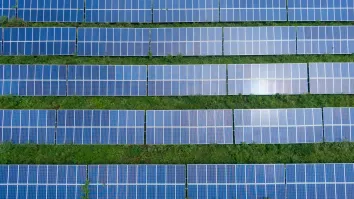
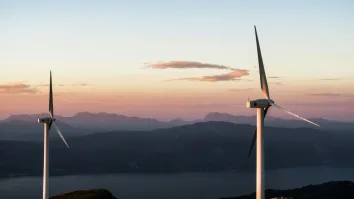

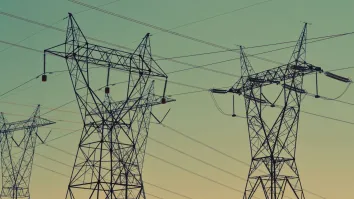




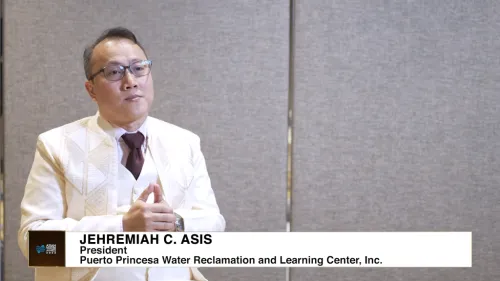








 Advertise
Advertise






